You'll have to take the good with the bad in this retrospective of trendy hobbies.
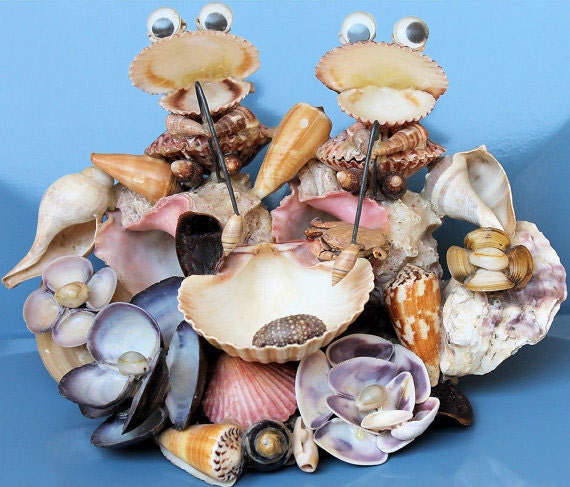
Almost everyone has had a brush with a craft fad. From sock monkeys to putting a bird on it, craft crazes have a way of defining an era and its interests. In the United States, the modern craft boom kicked off in the prosperous post-war 1950s, when many Americans had an increase in leisure time and income. In the decades since, a wide array of crafts have had their moment in the sun. Some are still with us, while others have faded away. Here's a look at a few that made a mark on their era.
1950s: Paint by Number
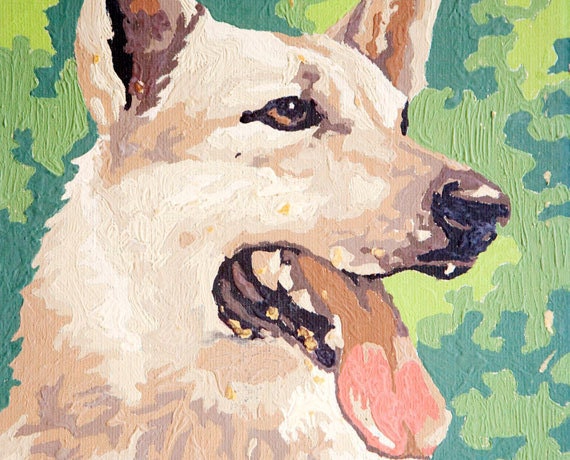 %3Cp%3E%3Ca%20href%3D%22http%3A%2F%2Fwww.etsy.com%2Fshop%2FBrightWall%22%3EBright%20Wall%3C%2Fa%3E%3C%2Fp%3E
%3Cp%3E%3Ca%20href%3D%22http%3A%2F%2Fwww.etsy.com%2Fshop%2FBrightWall%22%3EBright%20Wall%3C%2Fa%3E%3C%2Fp%3E %3Cp%3E%3Ca%20href%3D%22http%3A%2F%2Fwww.etsy.com%2Fshop%2FTheElmsVintage%22%20target%3D%22_self%22%3EThe%20Elms%20Vintage%3C%2Fa%3E%3C%2Fp%3E
%3Cp%3E%3Ca%20href%3D%22http%3A%2F%2Fwww.etsy.com%2Fshop%2FTheElmsVintage%22%20target%3D%22_self%22%3EThe%20Elms%20Vintage%3C%2Fa%3E%3C%2Fp%3EPaint by number kits have been around since the 1920s, but they experienced a boom in the post-war era, generating $80 million in retail sales in 1953 alone. The hobby affected how millions consumed and viewed art, causing critics to reel and hobbyists to shrug their shoulders in defiance. "[It] put paint brushes into the hands of millions who later become the patrons of museums and other centers of cultural activity in the decades after the Second World War," wrote Spencer R. Crew, director of the National Museum of American History. "What is striking about paint by number's popularity is the speed with which it became a vessel for anxieties about mass culture's intrusion into the well-cultured world of taste and social class," wrote William L. Bird in his book, Paint by Number: The How-to Craze that Swept the Nation. "When paint by number arrived as a popular pastime in the early fifties, it opened a cultural fissure that has never closed," explains Crew.
1960s: Tie-Dye
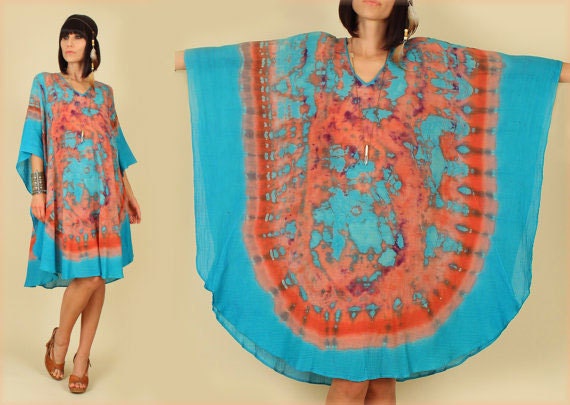 %3Cp%3E%3Ca%20href%3D%22http%3A%2F%2Fwww.etsy.com%2Fshop%2Fhellhoundvintage%22%20target%3D%22_self%22%3EHellhound%20Vintage%3C%2Fa%3E%3C%2Fp%3E
%3Cp%3E%3Ca%20href%3D%22http%3A%2F%2Fwww.etsy.com%2Fshop%2Fhellhoundvintage%22%20target%3D%22_self%22%3EHellhound%20Vintage%3C%2Fa%3E%3C%2Fp%3EThe tie-dye craze of the 1960s begins with a legend: in 1965, when Don Price was charged with saving the then-failing Rit Dye company, he roamed Greenwich Village in New York City, looking for inspiration in the hippie subculture that crowded into the neighborhood's cramped apartments. With dye in tow, he hoped to drum up interest with the psychedelic-color-loving, crafty crowd. When he discovered the married team of Will and Eileen Richardson, two out-of-work window dressers, he handed them a few bolts of fabric and a load of Rit dye. The couple produced tie-dyed fabric so beautiful, Halston caught wind and placed a $5,000 order. Celebrities like Janis Joplin were outfitted in the colorful cloth, and the Woodstock crowd wasn't far behind. By 1970, tie-dyed fabrics colored the store windows along Madison Avenue.
1970s: Macramé
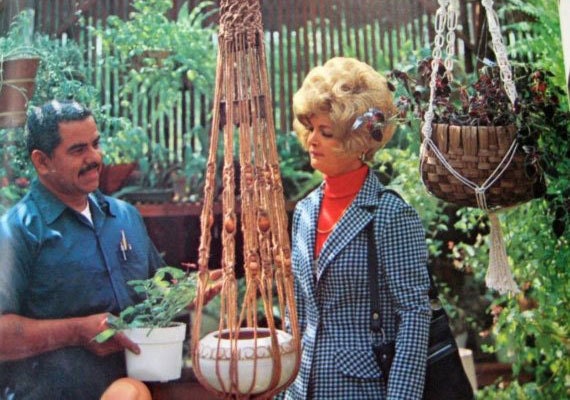 A%20pensive%20look%20at%20a%20macrame%20plant%20holder.%3Cp%3E%3Ca%20href%3D%22http%3A%2F%2Fwww.etsy.com%2Flisting%2F62232047%2Fmacrame-instruction-books-macrame%22%20target%3D%22_self%22%3EWave%20Song%3C%2Fa%3E%3C%2Fp%3E
A%20pensive%20look%20at%20a%20macrame%20plant%20holder.%3Cp%3E%3Ca%20href%3D%22http%3A%2F%2Fwww.etsy.com%2Flisting%2F62232047%2Fmacrame-instruction-books-macrame%22%20target%3D%22_self%22%3EWave%20Song%3C%2Fa%3E%3C%2Fp%3E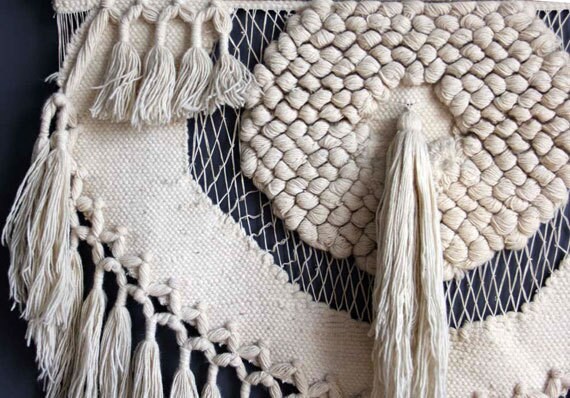 %3Cp%3E%3Ca%20href%3D%22http%3A%2F%2Fwww.etsy.com%2Fshop%2FGallivantingGirls%22%3EGallivanting%20Girls%3C%2Fa%3E%3C%2Fp%3E
%3Cp%3E%3Ca%20href%3D%22http%3A%2F%2Fwww.etsy.com%2Fshop%2FGallivantingGirls%22%3EGallivanting%20Girls%3C%2Fa%3E%3C%2Fp%3E %3Cp%3E%3Ca%20href%3D%22http%3A%2F%2Fwww.etsy.com%2Fshop%2Fgrammysyarngarden%22%3EGrammy's%20Yarn%20Garden%3C%2Fa%3E%3C%2Fp%3E
%3Cp%3E%3Ca%20href%3D%22http%3A%2F%2Fwww.etsy.com%2Fshop%2Fgrammysyarngarden%22%3EGrammy's%20Yarn%20Garden%3C%2Fa%3E%3C%2Fp%3EThought to originate from carpet weavers in ancient Afghanistan, the art of macramé spread across the world by sailors, who made and sold knotted pieces of art for extra money. The Victorians went crazy for it. "This kind of fancy work is not exactly a novelty, except in the sense that when anything becomes so old as to be forgotten, its revival has all the effect of a first appearance," explained Sylvia (pseudonym) in Sylvia's Book of Macrame Lace. The hobby came back in a big way during the 1970s, when a house wasn't a home without a macramé owl hanging against a wood panel wall in the living room.
1970s: Velvet Paintings
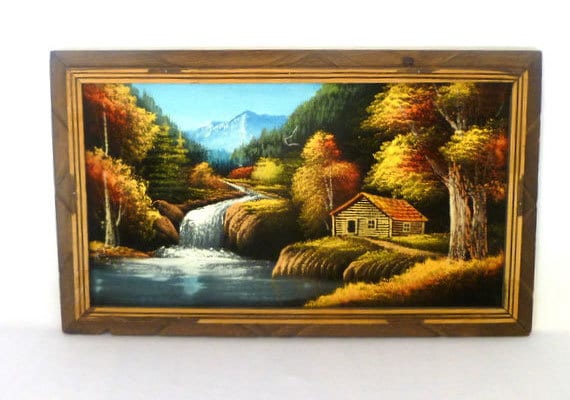 %3Cp%3E%3Ca%20href%3D%22http%3A%2F%2Fwww.etsy.com%2Fshop%2Forangedoorvintage%22%20target%3D%22_self%22%3EOrange%20Door%20Vintage%3C%2Fa%3E%3C%2Fp%3E
%3Cp%3E%3Ca%20href%3D%22http%3A%2F%2Fwww.etsy.com%2Fshop%2Forangedoorvintage%22%20target%3D%22_self%22%3EOrange%20Door%20Vintage%3C%2Fa%3E%3C%2Fp%3E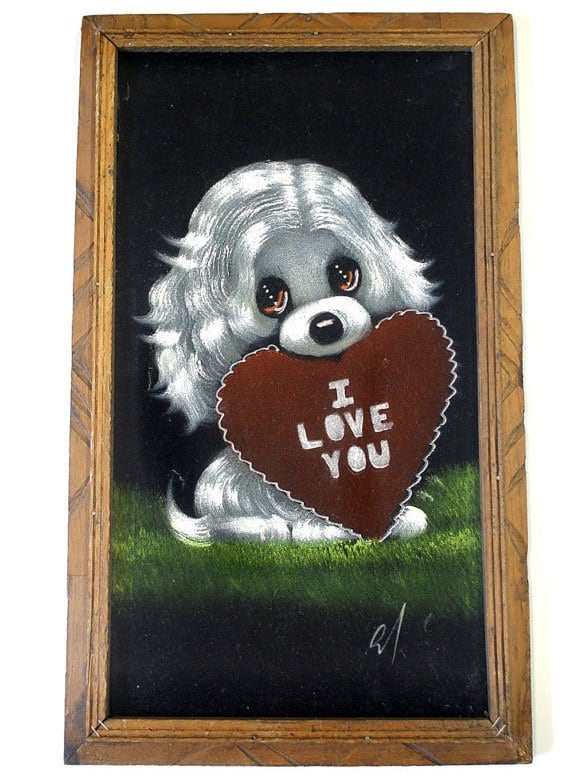 %3Cp%3E%3Ca%20href%3D%22http%3A%2F%2Fwww.etsy.com%2Fshop%2Fpaperanji%22%3EPaper%20Anji%3C%2Fa%3E%3C%2Fp%3E
%3Cp%3E%3Ca%20href%3D%22http%3A%2F%2Fwww.etsy.com%2Fshop%2Fpaperanji%22%3EPaper%20Anji%3C%2Fa%3E%3C%2Fp%3EWhile Marco Polo was the first to document the sighting of velvet painting in Kashmir, the 1970s trend was triggered by a man named Edgar Leeteg. In the 1930s, Leetag lived in Tahiti and was known as the "American Gauguin" for his paintings of tropical flowers, waterfalls and children. One fateful day, he went out to buy a canvas at a general store, but all the clerk had to offer was a bolt of black velvet. Leeteg began painting on velvet, selling dozens of works to sailors and eventually moving to Hawaii to open his own gallery. By the 1960s, velvet paintings by Leetag and others had trickled into mainland America. "Those who lived through that time will remember the common sight throughout suburbia of a traveling salesman laying out a new vanload of velvet on a street corner," wrote Eric A. Eliason and Scott Squire in Black Velvet Art. During the 1980s, municipalities toughened their vending ordinances to discourage velvet painting sellers and the trend faded. "America turned away from black velvet just as it abandoned bell-bottoms, polyester leisure suits, pet rocks, and lava lamps."
1980s: Bedazzling
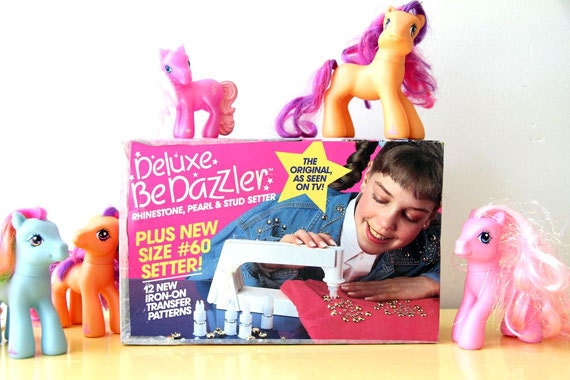 %3Cp%3E%3Ca%20href%3D%22http%3A%2F%2Fwww.etsy.com%2Fshop%2FBonyPonyTrappings%22%3EBony%20Pony%3C%2Fa%3E%3C%2Fp%3E
%3Cp%3E%3Ca%20href%3D%22http%3A%2F%2Fwww.etsy.com%2Fshop%2FBonyPonyTrappings%22%3EBony%20Pony%3C%2Fa%3E%3C%2Fp%3E
[embed width=570]http://www.youtube.com/watch?v=amicrtFYgVQ[/embed]
Minimalism was not part of the game in 1980s fashion. Once-plain sweatshirts hung heavy on the frames of trendy women, weighed down by hand-applied emerald green jewels and silver studs. Belts, cowboy boots and even exercise apparel feel victim to the onslaught of plastic rhinestones. The fad reached its peak with the Bedazzler, the jewel-applique machine that works "just like a stapler!"
1990s: Perler Beads
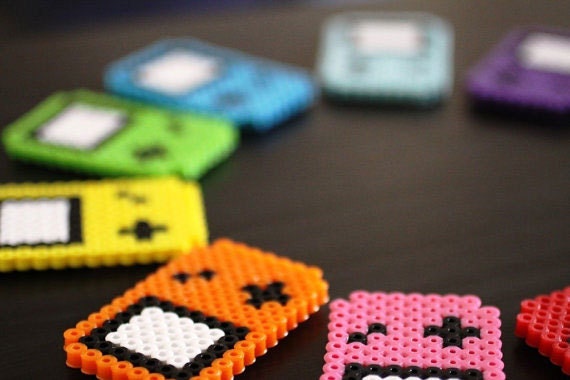 %3Cp%3E%3Ca%20href%3D%22http%3A%2F%2Fwww.etsy.com%2Fshop%2F8bittoast%22%20target%3D%22_self%22%3E8BitToast%3C%2Fa%3E%3C%2Fp%3E
%3Cp%3E%3Ca%20href%3D%22http%3A%2F%2Fwww.etsy.com%2Fshop%2F8bittoast%22%20target%3D%22_self%22%3E8BitToast%3C%2Fa%3E%3C%2Fp%3E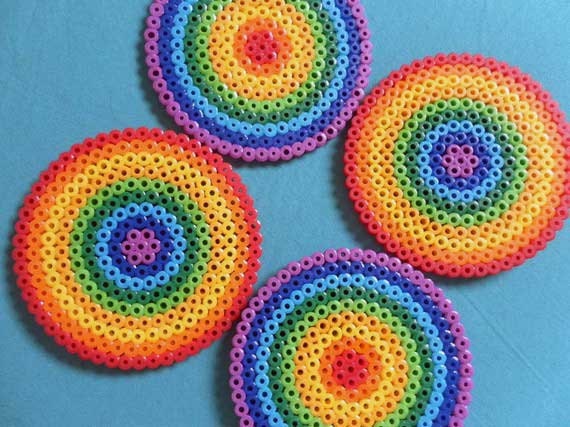 %3Cp%3E%3Ca%20href%3D%22http%3A%2F%2Fwww.etsy.com%2Fshop%2FPorcupineSpines%22%3EPorcupine%20Spines%3C%2Fa%3E%3C%2Fp%3E
%3Cp%3E%3Ca%20href%3D%22http%3A%2F%2Fwww.etsy.com%2Fshop%2FPorcupineSpines%22%3EPorcupine%20Spines%3C%2Fa%3E%3C%2Fp%3ETiny and spherical, Perler beads were supposedly invented by Gunnar Knutsson in Stockholm, Sweden during the 1960s. Knutsson created Perlers specifically to exercise the dexterity required to grasp the beads, making them a perfect therapy tool for the elderly. By the 1990s, Perler beads were a favorite craft supply. Children arranged the beads on a peg board, then begged adults to assist them by covering the beads in wax paper and pressing down with a hot iron. The heat fuses the beads, holding the child's pattern in place. Today, perler beads are often a favorite among video game fans, who value the beads' pixelated look.
1990s (and Today): Friendship Bracelets
 %3Cp%3E%3Ca%20href%3D%22http%3A%2F%2Fwww.etsy.com%2Fshop%2FCarnivalLab%22%20target%3D%22_self%22%3ECarnival%20Lab%3C%2Fa%3E%3C%2Fp%3E
%3Cp%3E%3Ca%20href%3D%22http%3A%2F%2Fwww.etsy.com%2Fshop%2FCarnivalLab%22%20target%3D%22_self%22%3ECarnival%20Lab%3C%2Fa%3E%3C%2Fp%3E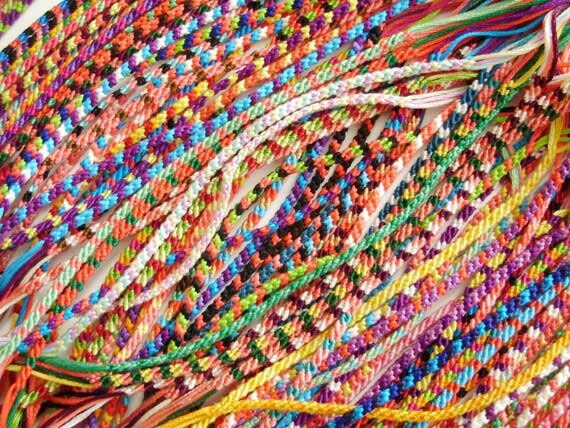 %3Cp%3E%3Ca%20href%3D%22http%3A%2F%2Fwww.etsy.com%2Fshop%2FQuietMischief%22%3EQuiet%20Mischief%3C%2Fa%3E%3C%2Fp%3E
%3Cp%3E%3Ca%20href%3D%22http%3A%2F%2Fwww.etsy.com%2Fshop%2FQuietMischief%22%3EQuiet%20Mischief%3C%2Fa%3E%3C%2Fp%3EIt is the ultimate craft for a rainy day. The woven patterns of friendship bracelets are numerous, with names passed around colloquially by in-the-know crafters. Broken stairway, chevron, fish, candy stripe are just a few of the patterns that saw children sneaking into their mother's sewing box for scraps of embroidery floss. The woven bracelets first gained attention in the 1970s, but rose to popularity in the 1990s, reaching a peak when President Bill Clinton wore one during his first televised interview after presidency. They have experience a resurgence in the past few years, thanks to a plethora of blog tutorials. What are some of your favorite craft fads?



